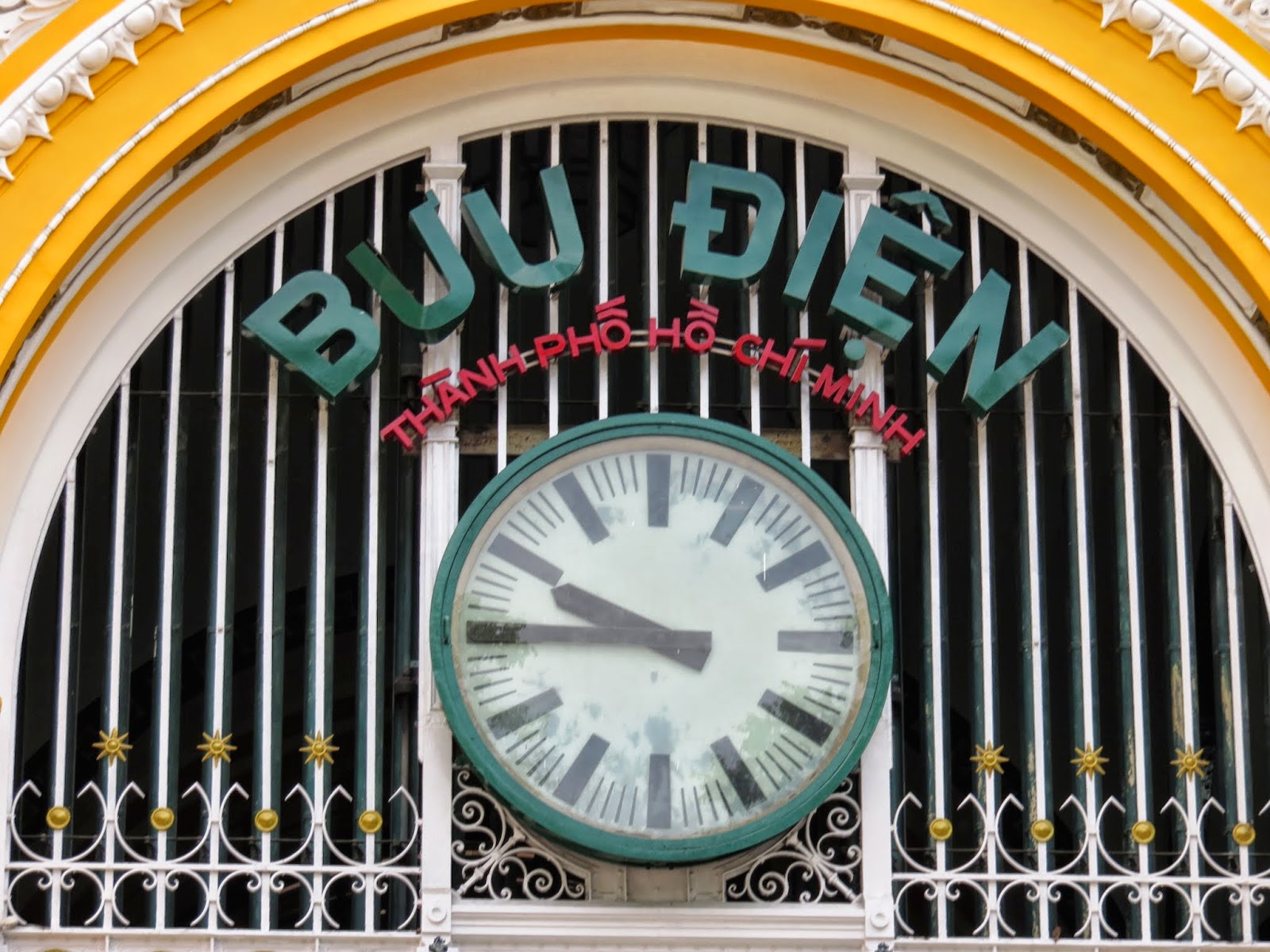Ho Chi Minh City, Vietnam
Ho Chi Minh City, Vietnam District 1 –
The central part of the city
It is Sunday, we took a taxi to the District One – the Central part of the city. It is crowded with people, motorbikes, street activity, and as the day goes on, it is hot and humid.

Norte Dame Cathedral is made of red bricks imported from France. The twin towers of the beautiful red-brick Notre Dame Cathedral have been a familiar landmark in Ho Chi Minh City since the 1880s.
Post Office
Across from the Notre Dame Cathedral, the vast Post Office was built in the late 19th century in a European style. Established in 1891, designed by Gustave Eiffel, it is often likened to a railway station in appearance.
Even its original phone booths still remain in place.
The high-ceilinged interior has hardly been touched since it was erected and is dominated by a massive portrait of Ho Chi Minh.
From District One, we decided to walk to the Jade Emperor Pagoda, located just outside District One. We saw a lot of sights along the way.
Handcrafted greeting cards
Birds in cages and beautiful flower beds
There were lots of bouquets of flowers everywhere.
It was Ladies Day. It is a tradition to send or give flowers to all the ladies.
Consulate General of the United Kingdom.
Scooters everywhere!
Balloons, street food, drinks, and hats were sold in front of the Zoo and Botanical Gardens.
Jade Emperor Pagoda - Outside District 1
The Jade Emperor Pagoda is one of the most attractive pagodas in the city and was built in 1909 by the Cantonese community. Dedicated to various Chinese-Vietnamese divinities, in a mixture of Taoist and Buddhist styles, the pagoda houses numerous statues and delicate woodcarvings with intricate tiles on the roof.
The interior is full of the smells from incense spirals hanging down from the ceiling.
The altars are richly decorated.
War Remnants
Museum
The Vietnam War (also known as the Vietnamese Revolution, the Second Indochina War, and contemporary Vietnam, as the American War) was a military conflict in present-day Vietnam from 1959 to April 30, 1975.
The War Remnants Museum is a must-see for people interested in Vietnam's history of combat with both the French and the Americans.
Of course, since the museum is here in Vietnam, it's from the Vietnamese perspective, but there's no denying the enormous amounts of casualties and suffering that the Vietnamese people endured during these years.
This is not a museum for the sensitive as it houses hundreds of photographs of atrocities committed during the 20th century and, in particular, the Vietnam War.
The museum is themed based, List of Themes, including a section on Historical Truths, showing the build-up to the conflict.
There is a large exhibit featuring photographs from war photographers around the world.
Imprisonment conditions during the War.
The Agent Orange and Aggressive War Crimes floor was far too graphic to capture. There were photos of torture, death, destruction, and another horrible aftermath of chemical warfare.
Outside the building is a range of American military hardware captured or abandoned, much of it handed over to the South Vietnamese regime. There's an F-111 fighter-bomber jet, Chinook helicopters, tanks, more planes, and a display of unexploded ordnance.
There is a lovely café outside the museum to rest your feet, sit under a fan, and have a cold drink. It's mid-afternoon, it's hot and humid.
The Rex Hotel is located in the heart of district one; the Rex Hotel is a building often associated with wartime Saigon.
For many people, the Rex Hotel brings back memories of the so-called "Five O'clock Follies" or of evenings spent in the rooftop bar, where soldiers and journalists alike could sit and relax with a drink.
The hotel was built in 1880 during the French colonial period. During the Vietnam War, it became a popular spot for journalists; Newsweek and Time magazines had their Saigon Bureau located on the second floor.
Graham Greene wrote part of The Quiet American—while staying in Room 214; many of the pivotal scenes are set around the hotel and its terrace bar.
The Municipal Theatre of Ho Chi Minh City, also known as Saigon Opera House.
It is an example of French Colonial architecture.
Statue of Uncle Ho Chi Minh
We had an exciting day in Saigon. We visited Districts 1 and 3 and walked around the French Quarter. We walked along the Saigon River to visit the Jade Emperor Pagoda and saw many historical buildings.
Cam on nhieu = Thank you very much
Cam on nhieu = Thank you very much


%2B-%2BCopy.JPG)






%2B-%2BCopy.JPG)

















.JPG)









.JPG)



.JPG)


No comments:
Post a Comment
Thank for you for your comment!